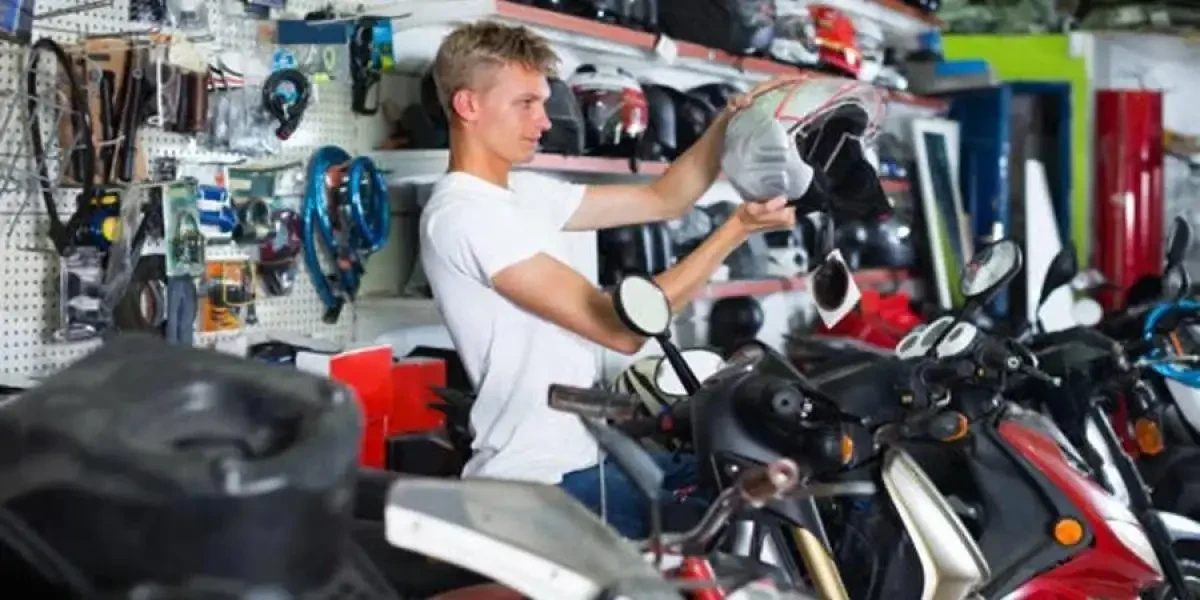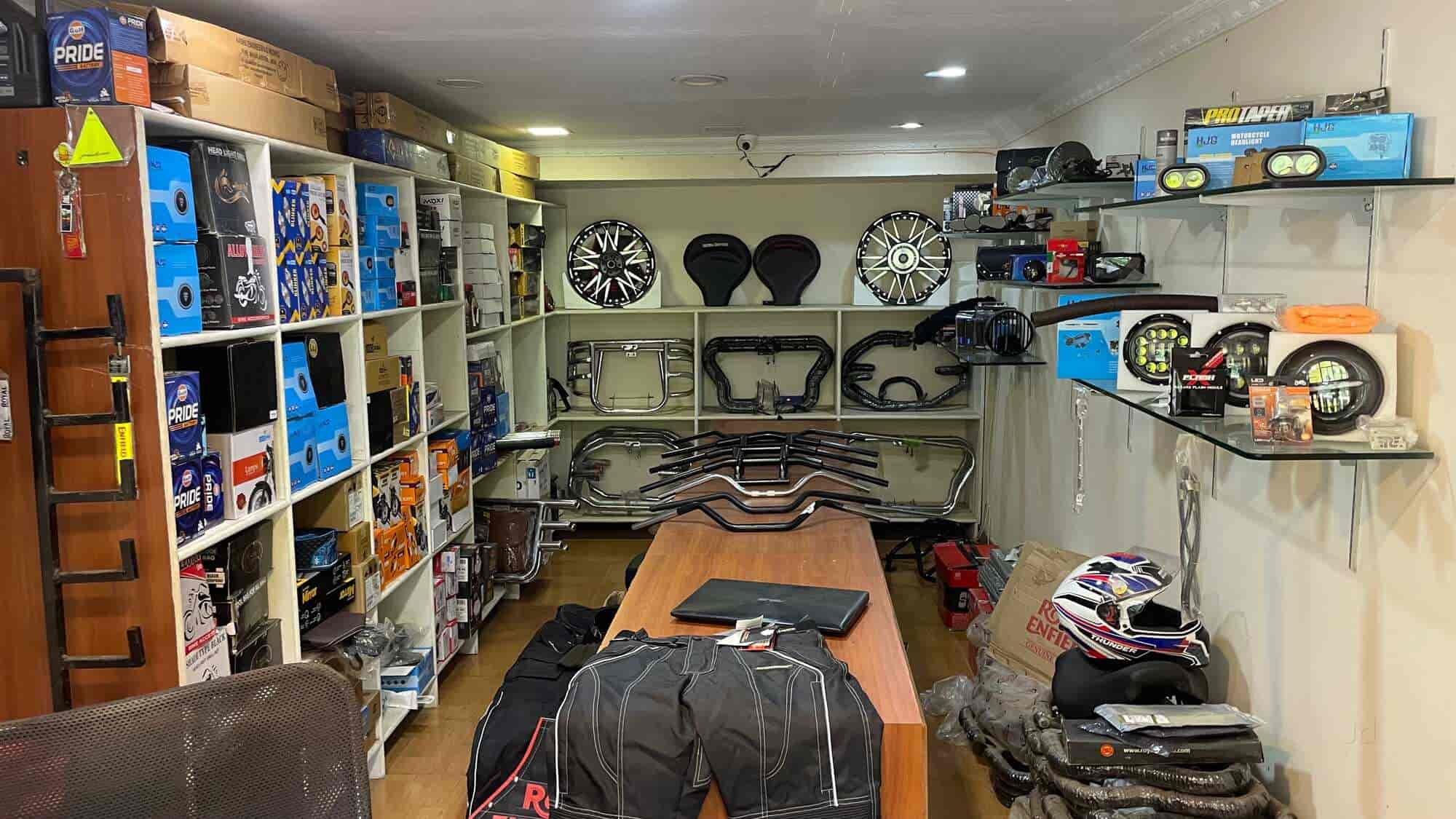Understanding the Vital Parts of a Bike: A Comprehensive Overview for Lovers
For bike lovers aiming to boost their riding experience and ensure their bikes run efficiently, recognizing the essential parts of a motorcycle is critical. Each element, from the engine's intricate functions to the critical duty of the braking systems, not just affects efficiency yet additionally security and comfort. This guide will certainly go through the basic parts that every cyclist need to know with, allowing notified options in both upkeep and potential upgrades. As we begin this exploration, one must ask: how does each part interact to create the smooth ride every enthusiast seeks?
Engine Components

The camshaft plays an important role in controlling the timing of the engine's shutoffs, ensuring the specific opening and closing necessary for reliable fuel and air consumption, as well as exhaust expulsion. This timing is important to preserving optimum engine performance and performance. Additionally, the carburetor or fuel shot system, depending upon the motorbike model, is liable for mixing air with gas in the appropriate proportion for combustion.
The air conditioning system, either air or liquid-based, functions to keep the engine's temperature within operational limitations, preventing overheating and guaranteeing durability - motox parts nz. Each component, carefully designed and integrated, contributes to the seamless procedure of the engine, specifying the motorcycle's power outcome and total efficiency
Transmission System
Indispensable to the motorcycle's functionality, the transmission system guarantees effective power transfer from the engine to the wheels. This system makes up a number of essential components, including the clutch, gearbox, and final drive, each playing an important function in equating the engine's power into motion. The clutch, generally operated by a hand lever, serves to disengage the engine and involve from the transmission, permitting smooth gear changes and controlled velocity.
The transmission, commonly referred to as the transmission proper, includes a collection of equipments that motorcyclists can by hand shift through to readjust the bike's speed and torque output. These gears are organized in a sequence that makes it possible for the bike to accelerate efficiently and preserve optimum engine performance across different speeds. A lot of motorcycles utilize a sequential gearbox, calling for the motorcyclist to move gears in a predetermined order.
Braking Devices
While recognizing the transmission system is vital to taking advantage of a motorbike's power, just as crucial is the capability to control and stop that power efficiently, which is where stopping systems come into play. Brakes are critical for security and performance, giving the biker with the necessary control to navigate numerous terrains and problems. big and tall motorcycle rain gear Normally, motorcycles include two kinds of braking systems: disc brakes and drum brakes.
Disc brakes are extra common in modern-day motorcycles due to their premium performance. This system uses better warm dissipation, regular performance, and enhanced quiting power, especially in wet problems.
Conversely, drum brakes, though less usual, are still located in some motorcycles. They work by pressing brake footwear versus the inner surface of a drum affixed to the wheel. While typically much less efficient in warmth dissipation and stopping power, drum brakes are less complex and much more affordable.
Understanding these stopping systems' subtleties allows bikers to preserve their motorcycles correctly and value the design that makes sure efficient and risk-free stopping.
Suspension and Guiding
Suspension and steering systems are vital components that considerably affect a bike's handling and ride comfort. The suspension system, including forks at the front and shock absorbers at the rear, takes in road abnormalities, improving stability and control. Front forks, inverted or normally telescopic, compress and rebound to reduce impacts, while back shock absorbers keep tire contact with the road, crucial for grip and safety and security.
Steering, centered around the handlebars, connects the cyclist to the bike's directional control. The guiding head bearings make certain smooth procedure, enabling precise maneuverability. Appropriate alignment and upkeep of these bearings are vital for foreseeable steering reaction and reducing cyclist exhaustion.
The suspension's adjustability is an additional vital element; preload, damping, and rebound settings check this allow customization to fit different riding conditions and styles. This adaptability is vital for enhancing performance, whether navigating metropolitan streets or taking on rugged tracks. Developments like electronic shock absorber supply real-time changes, improving experience top quality across diverse terrains.

Electric Solutions
After guaranteeing a smooth and controlled trip with reliable suspension and guiding systems, interest transforms to the electric systems, a critical aspect of modern motorbikes. These systems play an essential duty not only in starting the engine yet also in powering different components that improve the capability and safety of the motorbike.
At the heart of a bike's electrical system is the battery, which stores electric power necessary for starting the engine and powering that site complementary systems - motorcycle shop. The alternator or generator, combined with the rectifier-regulator, makes certain the battery remains charged while the motorbike functions, transforming power into electrical energy and keeping voltage degrees
The ignition system, an additional crucial element, is accountable for firing up the air-fuel combination in the engine's cylinders. Modern motorcycles usually use a digital ignition system, offering greater efficiency and reliability compared to conventional systems.
Illumination systems, consisting of fronts lights, tail lights, and signs, are additionally essential, ensuring visibility and safety for the biker. Extra electronic components such as sensors, control units, and displays add to innovative attributes like gas injection administration, anti-lock stopping systems (ABS), and digital dashboards, better improving the riding experience.
Verdict
A detailed understanding of a motorbike's vital components, consisting of the engine, transmission system, stopping mechanisms, suspension, guiding, and electrical systems, is indispensable for fanatics aiming to maximize efficiency, security, and convenience. Mastery of these components enables educated decisions pertaining to maintenance and upgrades, eventually enhancing the riding experience. By incorporating this knowledge, motorcyclists can guarantee their motorbikes run at peak efficiency and dependability, thereby making best use of both enjoyment and long life of their vehicles.
For motorbike fanatics looking to elevate their riding experience and ensure their bikes run efficiently, understanding the necessary components of a motorcycle is vital.Integral to the motorbike's capability, the transmission system ensures effective power transfer from the engine to the wheels.While comprehending the transmission system is vital to harnessing a motorcycle's power, similarly vital is the ability to control and quit that power effectively, which is where braking mechanisms come into play. Commonly, motorbikes include 2 kinds of stopping systems: disc brakes and drum brakes.
A comprehensive comprehension of a motorbike's crucial parts, consisting of the engine, transmission system, stopping devices, suspension, guiding, and electric systems, is indispensable for enthusiasts aiming to optimize safety and security, efficiency, and convenience.